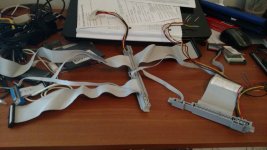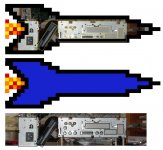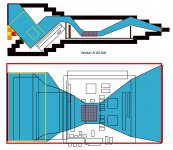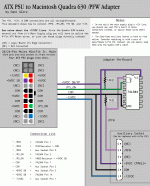I haven't put together the mockup yet. My resources are bit limited and I'm currently job hunting, too; not a lot of time to go nuts with a hacksaw.
Here's a CORRECT diagram for the Q630's PSU. The other one on this thread has some errors in it due to skipping pins on the edge connector, whoops!

As for the ATX adapter, I'm working on an easy to understand diagram now. One thing I'm wondering about is why the /PFW Ground load resistor value is so different between Dan's design and my own. His calls for a 47KΩ resistor, but I could only get the Q630 fully working by using something closer to the 7KΩ range... All of that makes me think there might be some variances in how /PFW works on some of these old machines, so it very well could end up being a "YMMV" situation with that load resistor's value.
For now, based on all my poking and prodding, the /PFW line on the Q630 is basically a direct feed from the +5V line on the main supply plug. I think it should work consistently with a 7KΩ resistor unless you have leaky caps.
Also, here's some messy in-progress
destruction of that edge connector. I'm straight up ripping the 50-pin SCSI off completely, and I might repurpose the CD audio cable for a neat audio-in port mod (depending on how it works, expect some experiments later on with that). Other cables will probably be shortened considerably.









